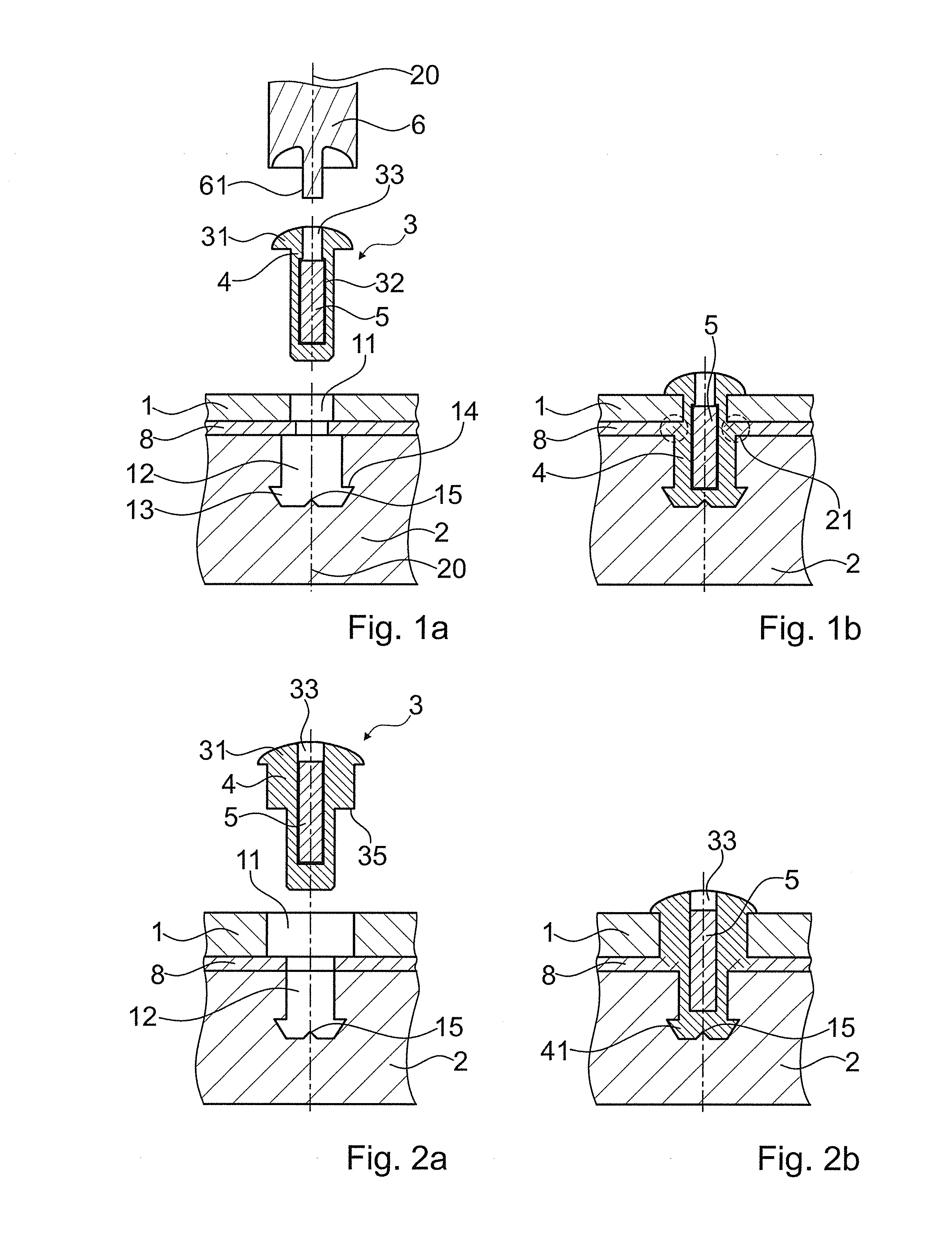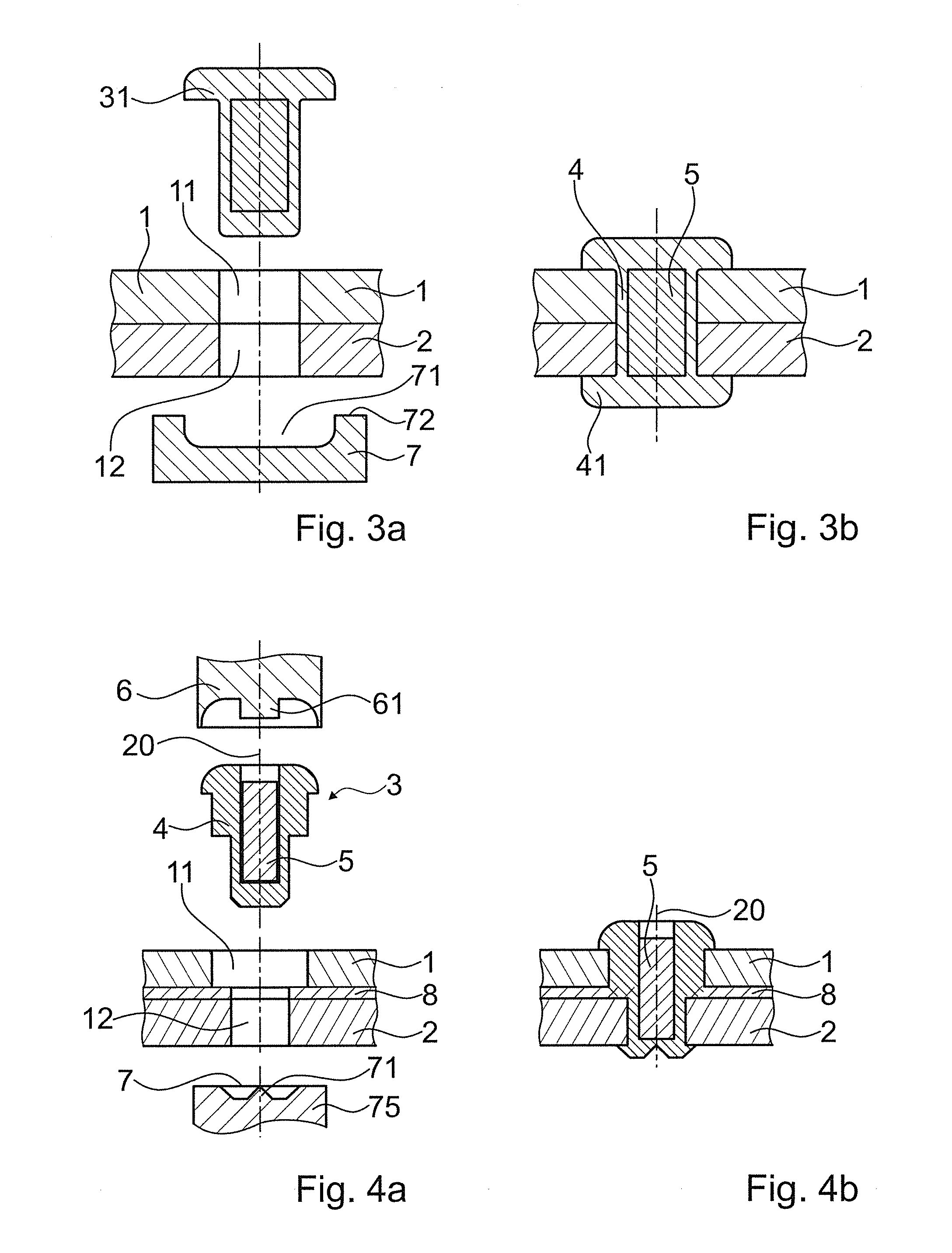Bonding objects together
a technology of objects and bonding elements, applied in the field of mechanical engineering and construction, can solve the problems of new challenges in the bonding elements of these materials, substantial galvanic corrosion, and special difficulties, and achieve the effect of high shear force resistance and high ductility
- Summary
- Abstract
- Description
- Claims
- Application Information
AI Technical Summary
Benefits of technology
Problems solved by technology
Method used
Image
Examples
Embodiment Construction
[0173]FIG. 1a depicts a basic set-up of embodiments of the invention. The first object 1 is a board or sheet, for example of a metal or of a fiber reinforced composite material. It has a first opening 11 being a through opening perpendicular to the board plane.
[0174]The second object 2 is, for example, either of a different material than the first object (for example, it may be of die-cast metal, such as die-cast magnesium or aluminum) or is (also) of a fiber-reinforced composite material, e.g. a foam filed carbon fiber reinforced sandwich element. The second object has a second opening 12 that in the depicted configuration is a blind opening. The blind opening forms an undercut 13 by having a distal broadening. Due to the distal broadening, a shoulder 14 is formed.
[0175]In the depicted configuration, there is also an optional separating / insulating layer 8 that is of a thermoplastic material. More in particular, the separating layer 8 may be of the same thermoplastic material as the...
PUM
| Property | Measurement | Unit |
|---|---|---|
| size | aaaaa | aaaaa |
| weight percent | aaaaa | aaaaa |
| Young's modulus | aaaaa | aaaaa |
Abstract
Description
Claims
Application Information
 Login to View More
Login to View More - R&D
- Intellectual Property
- Life Sciences
- Materials
- Tech Scout
- Unparalleled Data Quality
- Higher Quality Content
- 60% Fewer Hallucinations
Browse by: Latest US Patents, China's latest patents, Technical Efficacy Thesaurus, Application Domain, Technology Topic, Popular Technical Reports.
© 2025 PatSnap. All rights reserved.Legal|Privacy policy|Modern Slavery Act Transparency Statement|Sitemap|About US| Contact US: help@patsnap.com



